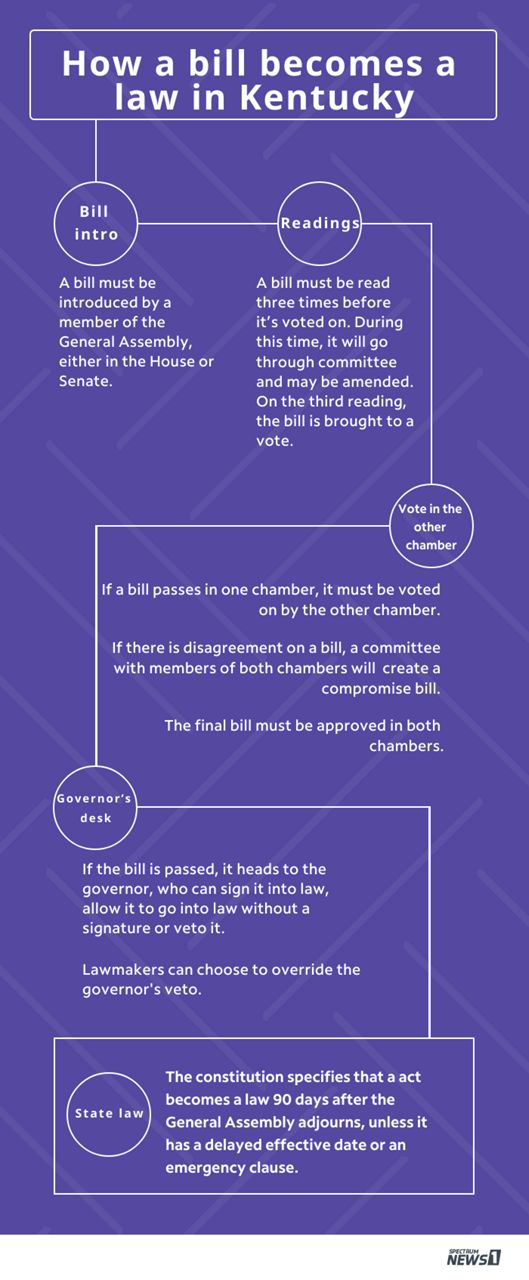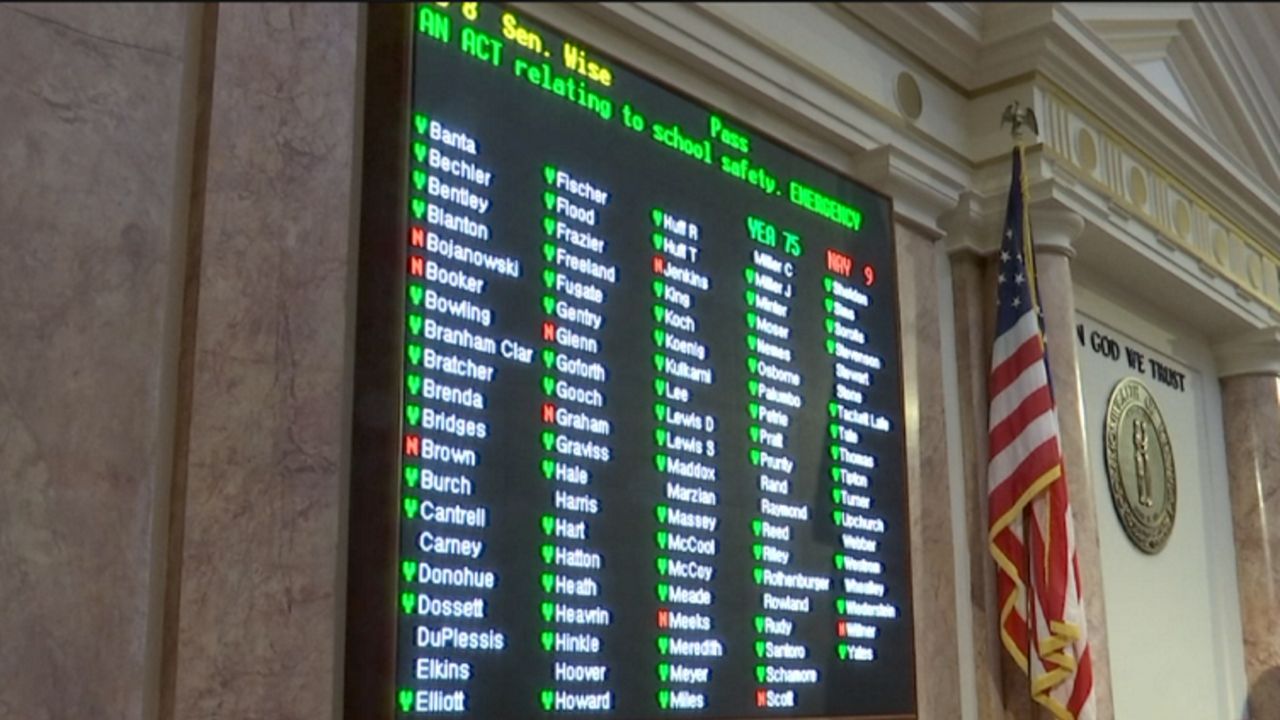FRANKFORT, Ky. — The 2024 Kentucky General Assembly has convened for their legislative session. That means that both the Kentucky House of Representatives and the Kentucky State Senate are meeting in Frankfort to pass laws impacting the lives of Kentuckians.
This year’s legislative session is known as a “long session.” Per state law, the General Assembly meets every year beginning on the first Tuesday following the first Monday in January; in odd-numbered years, lawmakers meet for no more than 30 legislative days, ending no later than March 30, and in even-numbered years, lawmakers meet for no more than 60 legislative days, ending no later than April 15. The even-numbered “long sessions” include passing a two-year state budget, plus any other legislation that lawmakers may want to take up.
How does a bill work its way from proposal to state law in Kentucky? Like many states, the Kentucky legislature follows a process similar to the U.S. Congress, but with some slight nuances. The Legislative Research Commission, which is the administrative and research arm of the General Assembly, has provided a guide to the legislative branch to help Kentuckians understand how the process works.
What is a bill?
According to the LRC, only a member of the General Assembly can introduce legislation, though lawmakers can introduce bills suggested by citizens or organizations.
Bills vary in length from a single paragraph to hundreds of pages. The Kentucky Constitution requires that a bill relate to only one subject, which must be stated in the bill’s title. The constitution also prohibits special laws that apply to only one city, town, county or person.
All bills must begin with these words: “Be it enacted by the General Assembly of the Commonwealth of Kentucky.”
Some bills may pass with few changes (amendments.) Others, however, may go through several changes before becoming law. Amendments can be proposed by a committee or legislator, but they must be approved by the full Senate or House before they are incorporated into the bill.
If a committee changes a bill significantly, they may adopt what’s known as a “committee substitute,” which takes the place of the original bill once adopted. If an amendment or committee substitute significantly changes the subject of a bill, it may need to be given a new title.
How does a bill become a law?
Introduction and committee referral
The bill is introduced in the Senate or the House. If it is a bill that raises revenue, it must be introduced in the House. Each bill is given a number, read by title and sponsor, and referred to a standing committee by the Committee on Committees.

The bill heads to committee where it can be discussed and changed if needed. The bill may then be reported out with one of the following designations: favorable, favorable with committee amendments, favorable with committee substitute, unfavorable, or, in the Senate, without opinion.
The committee can also kill a bill by failing to act on it.
Readings
To become law, a bill must have three readings. When a committee reports a bill favorably, the bill has its first reading and is placed on the calendar for the following day.
On the second reading, the bill is sent to the Rules Committee. The Rules Committee may send it back to the committee it came from or place it in the “Orders of the Day” for consideration.
Finally, the bill is read for a third time with a motion to pass it. That motion opens the floor for debate.
After debate and amendments, the bill faces a final vote. In order to pass, a bill must be approved by at least two-fifths of the members of the chamber (40 representatives or 16 senators) and a majority of the members present and voting.
If the bill includes a funding or emergency clause, it must be approved by a majority of the members elected to each chamber (51 representatives and 20 senators).
During odd-numbered years, if a bill raises revenue or appropriates funding, it requires a three-fifths majority to pass (60 representatives and 24 senators). Proposed constitutional amendments also require a three-fifths majority to pass.
Passage
If a bill is defeated, it can only be revived if two members who voted against it request that it be reconsidered and the request is approved by a majority vote.
If a bill passes in one chamber, it goes to the other chamber, where it follows much the same procedure. Both chambers must agree on the final form of the bill. When the chambers do not agree, the bill moves to a conference committee of senators and representatives who will reconcile the differences. The compromise bill from the conference committee must be approved by both chambers.
Signing the bill into law
After passage by both chambers, the bill is signed by the presiding officer and sent to the governor. The governor can choose to sign the bill, allow it to become law without signing it or veto it. The governor has 10 days (excluding Sundays) to act after the bill has been received.
The governor must veto a bill in its entirety, unless it is a funding bill, in which case he can choose which parts of the bill to veto.
The governor’s veto may be overridden by a majority of the elected members of both chambers.
Legislative timeline
The first day of the session this year is Jan. 2. Lawmakers in the House have until Feb. 26 to file their bills; in the Senate, they have until Feb. 28.
March 29 begins the “veto period.” This is when bills head to the governor’s desk, who can decide which bills to sign into law and which to veto.
Lawmakers re-convene on April 12 to consider if they wish to override the governor’s veto on any bills and any other legislation they want to advance.
April 15 is the last day the legislature can meet.



